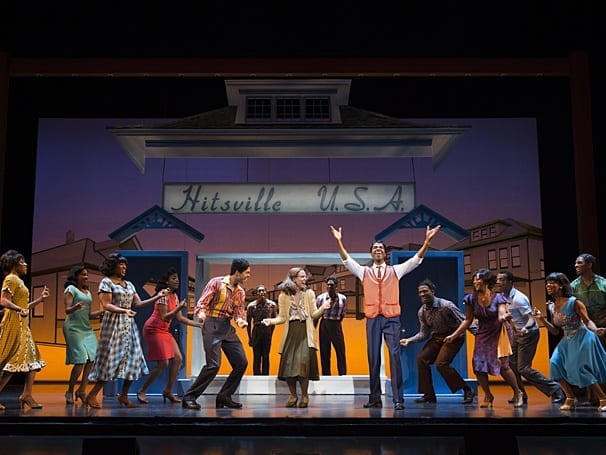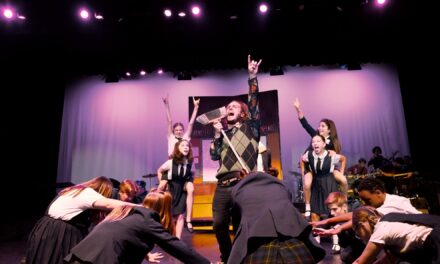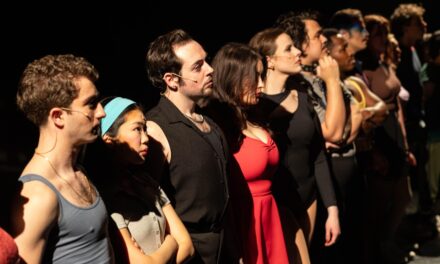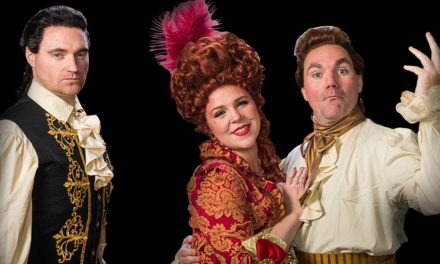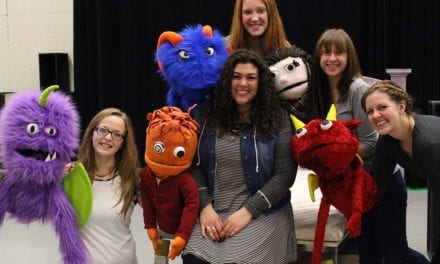SALT LAKE CITY — Utah is a desert. At times it feels like that stigma goes far beyond our weather and water levels, to the very heart of leisure itself. If a movie is in limited release, chances are we’ll be catching it on iTunes many months from now. If a music superstar is planning a global tour, the ol’ SLC likely doesn’t make an appearance in their “must play” column. As a whole, we Utahns can be known to suffer from a bit of a cultural dearth. The simple, sure-fire antidote? Supporting Broadway Across America at the magnificent Capitol Theater. Motown the Musical was, for me, a tsunami of artistic excitement, bursting over our entertainment desert-state.
The venue of the Capitol Theater has long been a favorite of mine. Originally opened in 1913, and beautifully restored in 1976, this performance venue has been the setting for untold numbers of shows and events. On this evening, it was home to some of the hardest working, most versatile and impressive performers I’ve had the pleasure of enjoying.
The classic, instantly recognizable Motown logo hung massive, glittering, and illuminated as we found our seats. That glowing iconic logo instantly brought to mind so many love affairs I’ve had with those albums and songs over the years. I grew up with a father who had chosen to stay firmly planted in the music of his youth, and he passed the love of those artists along to me. I was raised knowing that this music was special; it was different; it mattered. The Jackson Five, Stevie Wonder, Marvin Gaye, the Temptations—these are the foundation of my musical tastes to this very day.
I must admit, before this viewing, I was unfamiliar with this musical—aside from knowing that it was a “jukebox musical” about the founding of Motown Records. I was very pleased to learn that it was much more. The story (written by Berry Gordy, Jr.) revolves primarily around Berry Gordy and the founding and rise of Motown records. The show introduces us to Jackie Wilson, Diana Ross, Smokey Robinson, Marvin Gaye, and many other superstars along the way.
Everything about this production, directed by Charles Randolph-Wright, was as slick, polished, and perfected as the original performances that the show is based on. The sets were all mechanized and floated around the stage, giving the play such a great sense of movement and energy. The production utilized minimal pieces to create a maximum effect. A forced perspective cutout street scene was one of the most striking and adaptable set pieces I’ve ever seen, and it added depth, texture, and intrigue. I’m not sure if there are two places in recorded history more disparate than 2016 in Salt Lake City versus 1959 Detroit, but by incorporating video in many different, and ingenious ways, I found it very easy to be allow myself to be transported back to that era.
The costumes, hair and makeup were absolutely transformative. Most of the actors embodied several different Motown icons throughout the course of the show. I was shocked again and again to see the attention to the smallest of details in their dress and appearance. It was clear that both cast and crew had studied these hit-makers intently in preparation for their roles.

Krisha Marcano (Florence Ballard), Allison Semmes (Diana Ross) & Trisha Jeffrey (Mary Wilson) in Motown The Musical. Photo by Joan Marcus.
The joint, impeccable elements of the costumes, hair, sets, staging, and choreography, combined with the transcendent performances of the actors, had a time-warp effect for me. It was simple to allow myself to get carried away and feel like I was there. For example, watching The Temptations and The Four Tops battling it out and trying to top each other again and again was exhilarating.
Berry Gordy, admirably played by Chester Gregory, was a very approachable character, who was quite easy for me to sympathize with. Gregory embodied an impassioned angst that carried the show nicely for me. His smooth husky voice easily handled every song thrown at him. Allison Semmes’ portrayal of the legendary Diana Ross was positively captivating. It was thrilling to watch her journey from a young, fresh faced, eager to please novice to the seasoned, powerful, consummate diva. Jesse Nager captured the playful side of treble-voiced icon Smokey Robinson nicely. He offered the lion’s share of the comic relief for the production, and did so handedly. Mary Wells, masterfully played by Martina Sykes, had the entrance of the night, no question. But, for my money, the performance of the night certainly goes to Jarran Muse, who fully embodied smooth singing, fervent civil trendsetter Marvin Gaye. Muse was able to lay his emotions bare and motivate intense, powerful emotions through his songs. Watching his inner tumult spill out all over “What’s Goin’ On” has left an indelible mark on my connection to those haunting words and melodies. I will long remember that enactment, and am grateful for the perspective it’s given me on an old favorite of mine.

Reed L. Shannon as Michael Jackson (center), with the Jackson 5, in Motown The Musical. Photo by Joan Marcus.
If there is a chink to be found in the armor of Motown the Musical, it’s that forcing pop songs into the dramatic dialogue of a show can at times feel inauthentic. Many Jukebox Musicals seem to run into this problem—they take well-known songs and write the show around them so they fit in better into the vision of the show. There are cases in this show where it works very well (“What’s Goin’ On,” in particular); however, there are several others where it just felt shoehorned and awkward to me. Some of the heavier moments did seem to fall flat a bit as a result. That being said, this was certainly the exception.
Overall, if you are a fan of Motown, or popular music in general, you would be well served by this fast-paced, exciting rush down memory lane. Thank you, Berry Gordy, for serving as the conduit to a lifetime of memories and volumes of world altering melodies; for believing that music makes the world a better place, and for enabling the pioneers, the dreamers, the radicals and the artists.

